Abstract
A solid-phase, one-step radioimmune assay was developed which could detect as little as 0.02 microliter of a standard Aleutian disease virus antigen preparation, approximately 3.2 ng of viral protein. Virus antigen was measured in different mink organs and cell types during experimental intraperitoneal infection. The gut and kidney were the first organs in which virus antigen could be detected (day 3 to 6 after infection). On day 6 or later virus antigen was found in spleen, liver, kidney, lymph nodes, peritoneal exudate, and bone marrow cells. With inhibition of antigen binding, a radioimmune assay was developed for antibody detection. Viral antibodies could be detected as early as 3 days after infection. Antibody titers from 1/10(5) to more than 1/10(6) were found in plasmacytotic mink. When the sensitivity of the antibody radioimmune assay was compared with that of other known methods for anti-Aleutian disease virus quantitation, the radioimmune assay was considerably more sensitive, detecting as little as 5 ng of antibody.
Full text
PDF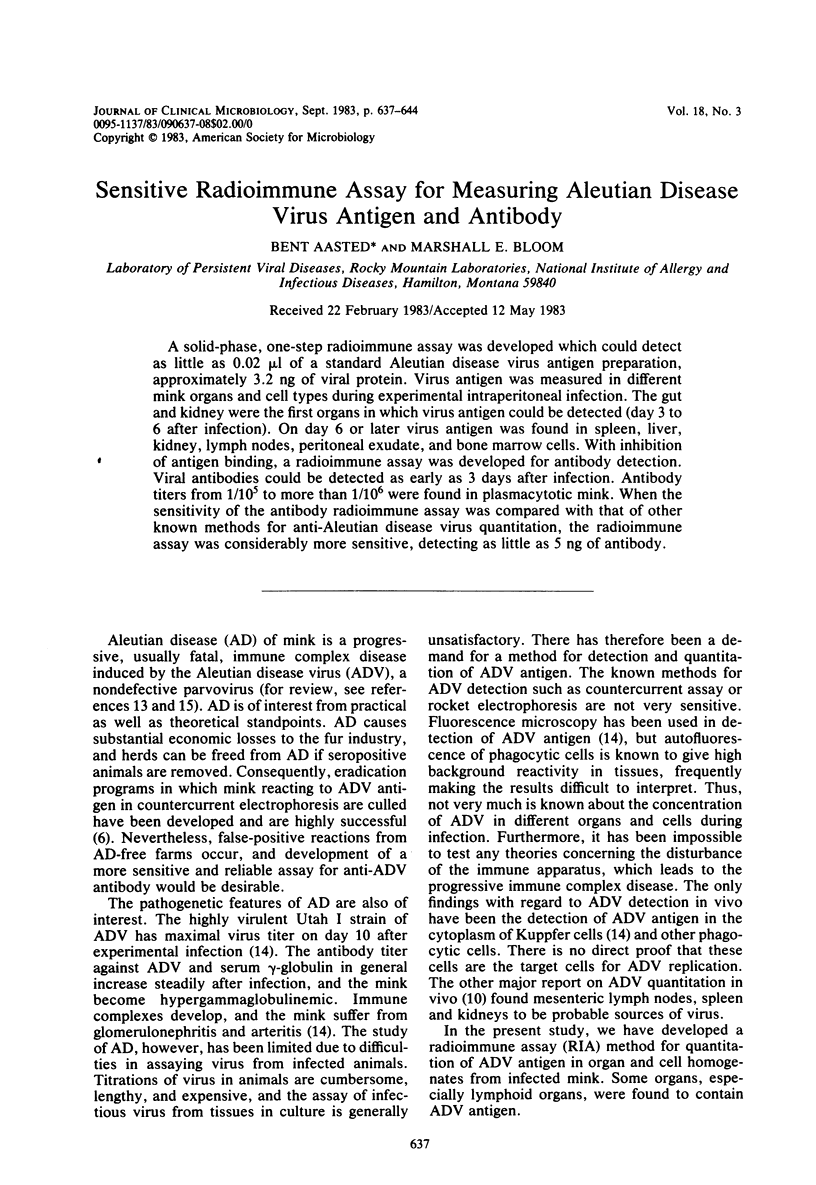
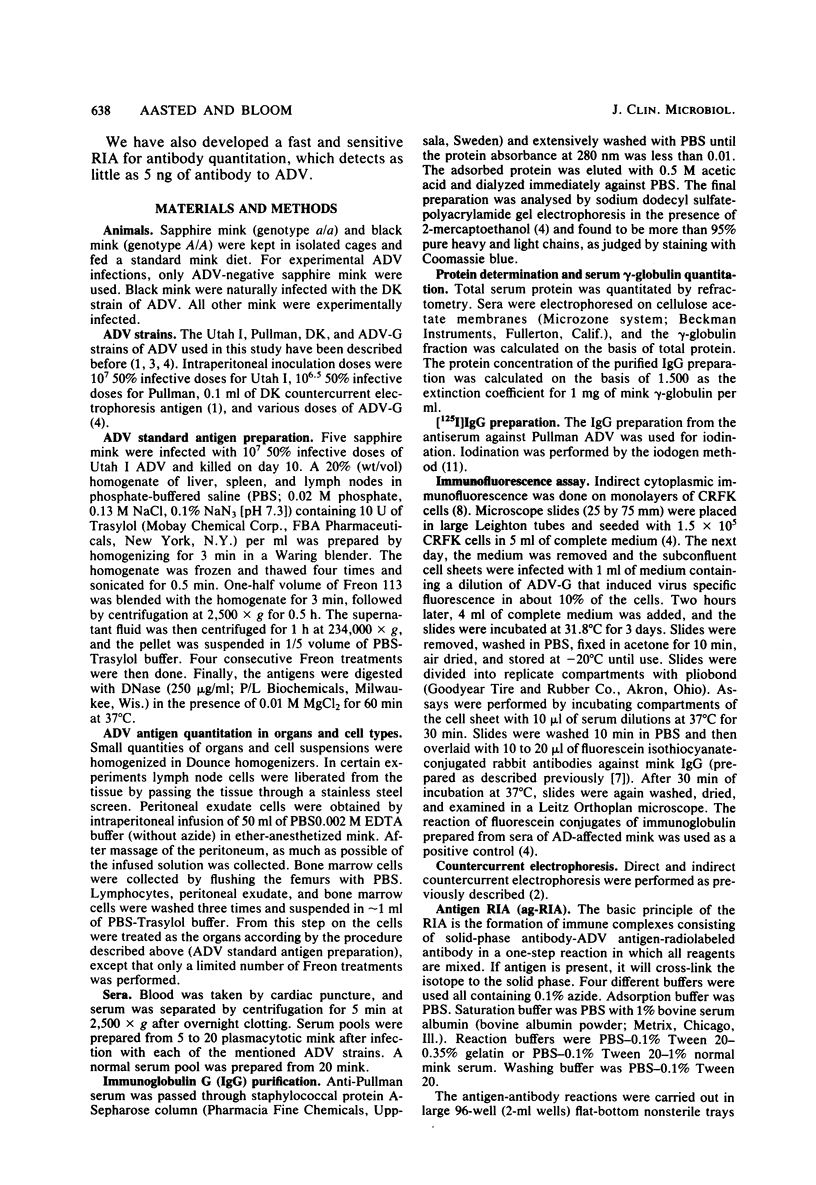
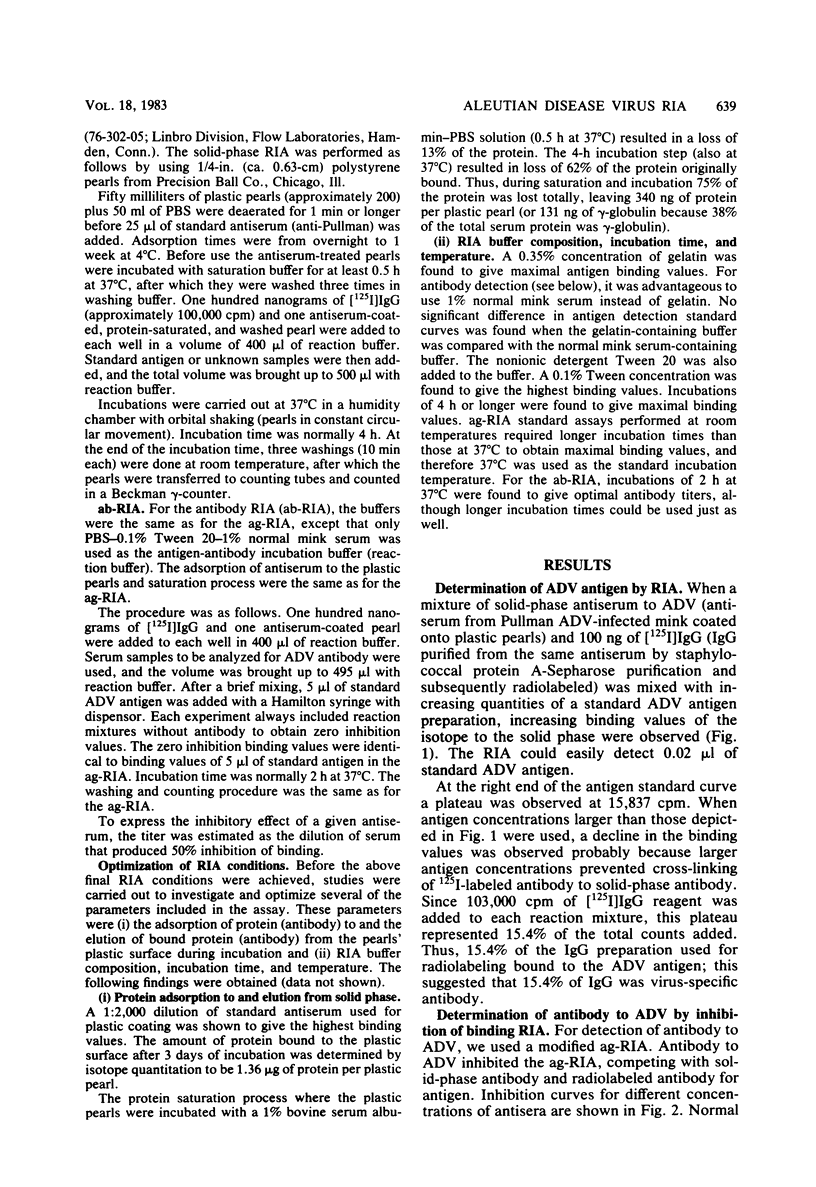
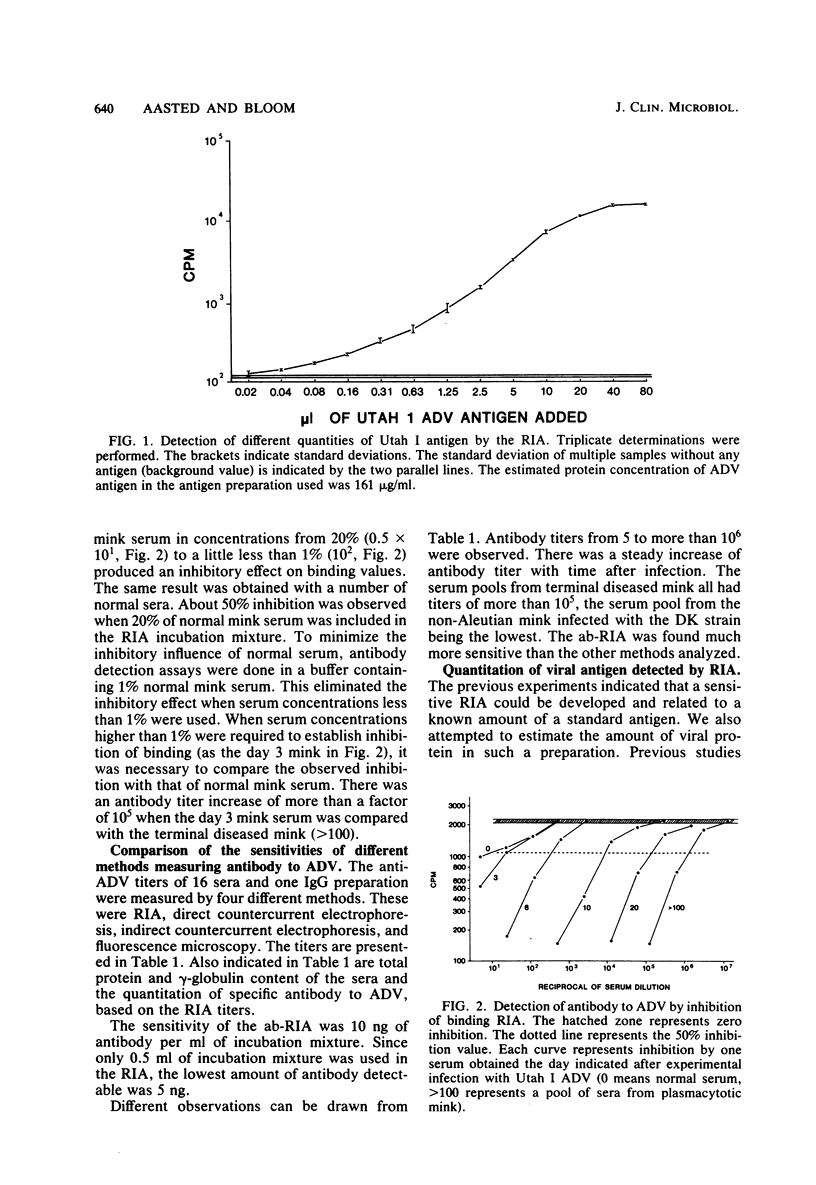
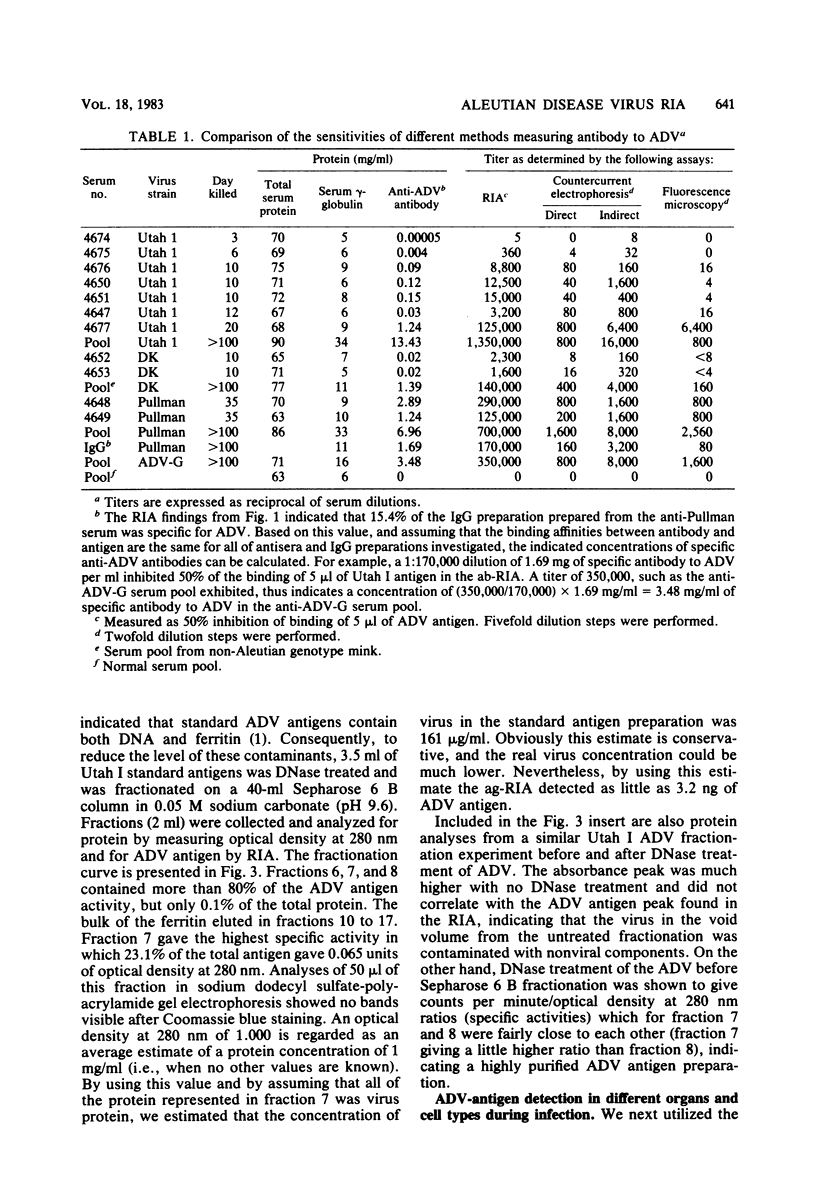
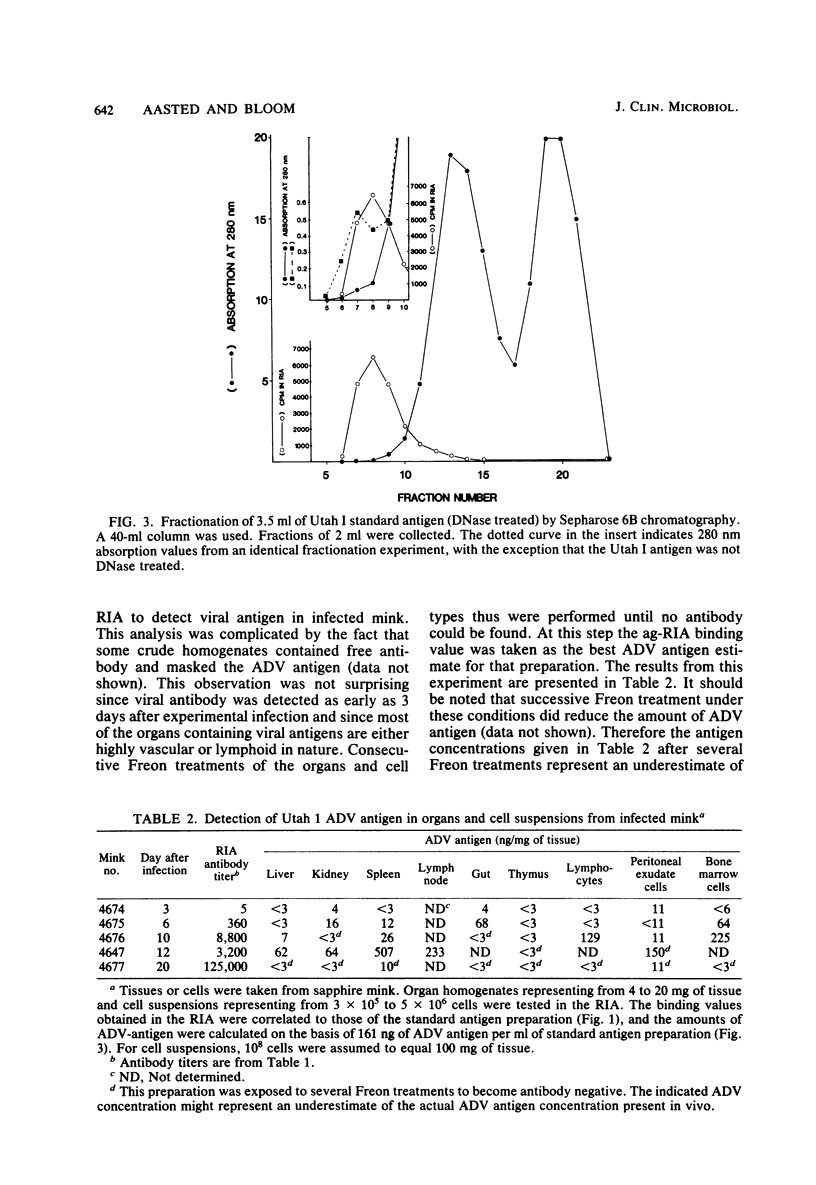
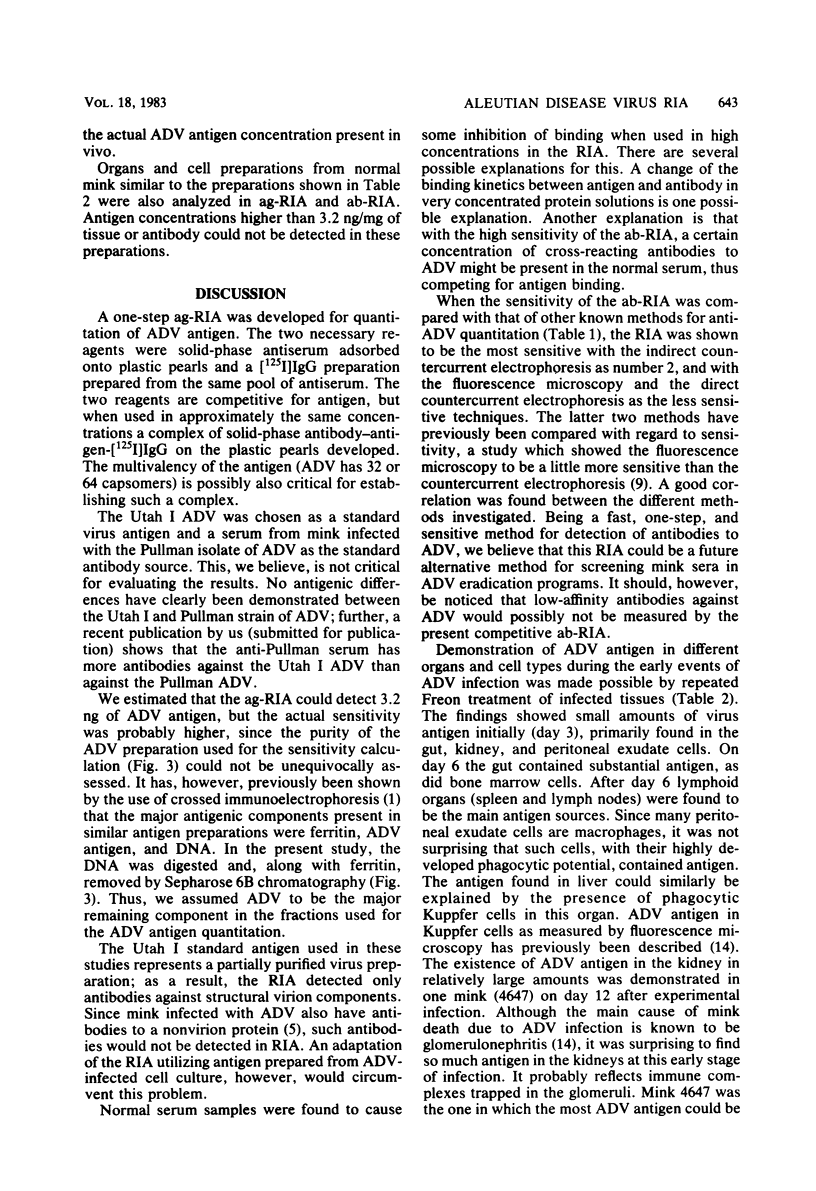
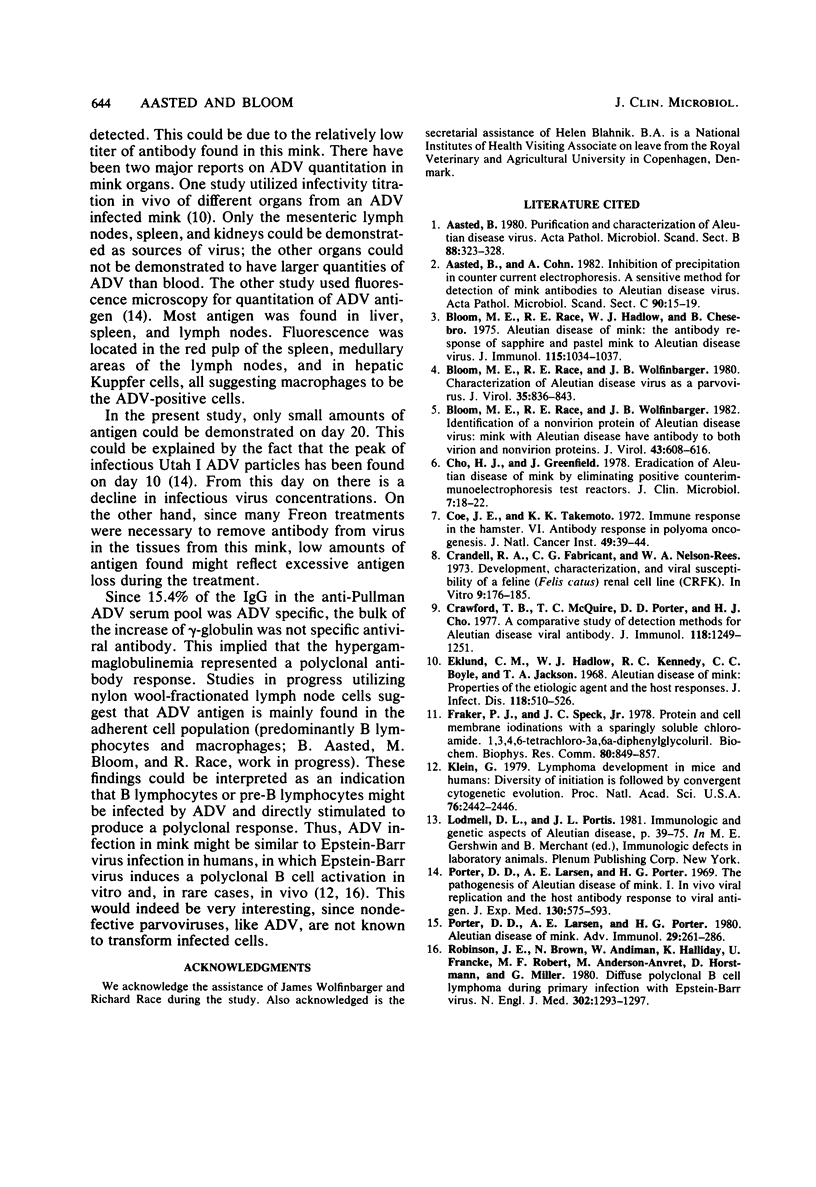
Selected References
These references are in PubMed. This may not be the complete list of references from this article.
- Aasted B., Cohn A. Inhibition of precipitation in counter current electrophoresis. A sensitive method for detection of mink antibodies to Aleutian disease virus. Acta Pathol Microbiol Immunol Scand C. 1982 Feb;90(1):15–19. doi: 10.1111/j.1699-0463.1982.tb01411.x. [DOI] [PubMed] [Google Scholar]
- Aasted B. Purification and characterization of Aleutian disease virus. Acta Pathol Microbiol Scand B. 1980 Dec;88(6):323–328. doi: 10.1111/j.1699-0463.1980.tb02650.x. [DOI] [PubMed] [Google Scholar]
- Bloom M. E., Race R. E., Hadlow W. J., Chesebro B. Aleutian disease of mink: the antibody response of sapphire and pastel mink to Aleutian disease virus. J Immunol. 1975 Oct;115(4):1034–1037. [PubMed] [Google Scholar]
- Bloom M. E., Race R. E., Wolfinbarger J. B. Characterization of Aleutian disease virus as a parvovirus. J Virol. 1980 Sep;35(3):836–843. doi: 10.1128/jvi.35.3.836-843.1980. [DOI] [PMC free article] [PubMed] [Google Scholar]
- Bloom M. E., Race R. E., Wolfinbarger J. B. Identification of a nonvirion protein of Aleutian disease virus: mink with Aleutian disease have antibody to both virion and nonvirion proteins. J Virol. 1982 Aug;43(2):608–616. doi: 10.1128/jvi.43.2.608-616.1982. [DOI] [PMC free article] [PubMed] [Google Scholar]
- Cho H. J., Greenfield J. Eradication of Aleutian disease of mink by eliminating positive counterimmunoelectrophoresis test reactors. J Clin Microbiol. 1978 Jan;7(1):18–22. doi: 10.1128/jcm.7.1.18-22.1978. [DOI] [PMC free article] [PubMed] [Google Scholar]
- Coe J. E., Takemoto K. K. Immune response in the hamster. VI. Antibody response in polyoma oncogenesis. J Natl Cancer Inst. 1972 Jul;49(1):39–44. [PubMed] [Google Scholar]
- Crandell R. A., Fabricant C. G., Nelson-Rees W. A. Development, characterization, and viral susceptibility of a feline (Felis catus) renal cell line (CRFK). In Vitro. 1973 Nov-Dec;9(3):176–185. doi: 10.1007/BF02618435. [DOI] [PubMed] [Google Scholar]
- Crawford T. B., McGuire T. C., Porter D. D., Cho H. J. A comparative study of detection methods for Aleutian disease viral antibody. J Immunol. 1977 Apr;118(4):1249–1251. [PubMed] [Google Scholar]
- Eklund C. M., Hadlow W. J., Kennedy R. C., Boyle C. C., Jackson T. A. Aleutian disease of mink: properties of the etiologic agent and the host responses. J Infect Dis. 1968 Dec;118(5):510–526. doi: 10.1093/infdis/118.5.510. [DOI] [PubMed] [Google Scholar]
- Fraker P. J., Speck J. C., Jr Protein and cell membrane iodinations with a sparingly soluble chloroamide, 1,3,4,6-tetrachloro-3a,6a-diphrenylglycoluril. Biochem Biophys Res Commun. 1978 Feb 28;80(4):849–857. doi: 10.1016/0006-291x(78)91322-0. [DOI] [PubMed] [Google Scholar]
- Klein G. Lymphoma development in mice and humans: diversity of initiation is followed by convergent cytogenetic evolution. Proc Natl Acad Sci U S A. 1979 May;76(5):2442–2446. doi: 10.1073/pnas.76.5.2442. [DOI] [PMC free article] [PubMed] [Google Scholar]
- Porter D. D., Larsen A. E., Porter H. G. Aleutian disease of mink. Adv Immunol. 1980;29:261–286. doi: 10.1016/s0065-2776(08)60046-2. [DOI] [PubMed] [Google Scholar]
- Porter D. D., Larsen A. E., Porter H. G. The pathogenesis of Aleutian disease of mink. I. In vivo viral replication and the host antibody response to viral antigen. J Exp Med. 1969 Sep 1;130(3):575–593. doi: 10.1084/jem.130.3.575. [DOI] [PMC free article] [PubMed] [Google Scholar]
- Robinson J. E., Brown N., Andiman W., Halliday K., Francke U., Robert M. F., Andersson-Anvret M., Horstmann D., Miller G. Diffuse polyclonal B-cell lymphoma during primary infection with Epstein-Barr virus. N Engl J Med. 1980 Jun 5;302(23):1293–1297. doi: 10.1056/NEJM198006053022306. [DOI] [PubMed] [Google Scholar]


